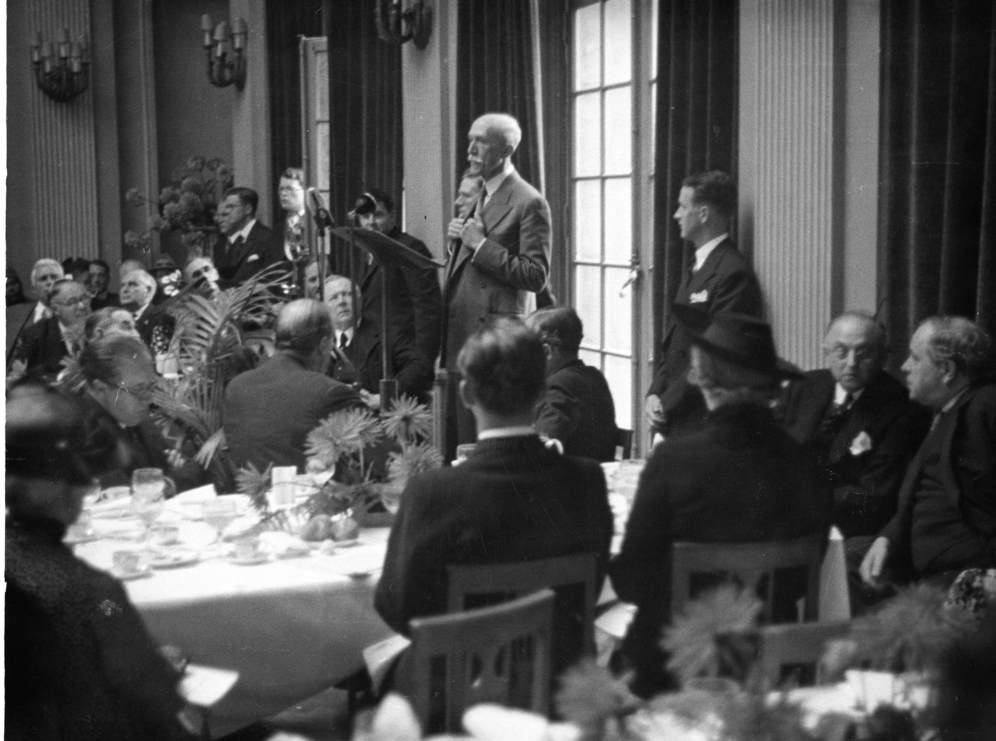Practices: (3) Creative initiatives
The imaginative lunch or dinner party could also play a role at the political level. Here we see Dutch Foreign Minister J. A. E. Patijn speaking at a dinner at the League of Nations in Geneva in 1938, organised by the OG. Patijn was seeking to build bridges between the Netherlands and Belgium after a period of tension, and the dinner party provided a natural venue for him to speak of his personal experience of this. It was a way of bringing living moral experience into a governmental or political context. The dinner was the fruit of the inspiration of an elderly Scottish lady who wanted to bring a spiritual dimension to the League of Nations. Buchman thought diplomacy had a spiritual side to it.
In MRA, books, films and musical theatre were all deployed in the strategy of trying to touch and change hearts. At the height of the Cold War one MRA play was put on for just one person – the Prime Minister of Burma. On the eve of Congolese independence in 1960, an MRA film on reconciliation between colonial rulers and African nationalists, Freedom, was shown to the incoming Prime Minister, Patrice Lumumba and 17 of his cabinet – along with all of their chauffeurs.
The speaking tour was another method used by MRA. In the late 1940s, the aforementioned Irene Laure travelled across Germany talking about her experience of overcoming hatred.

